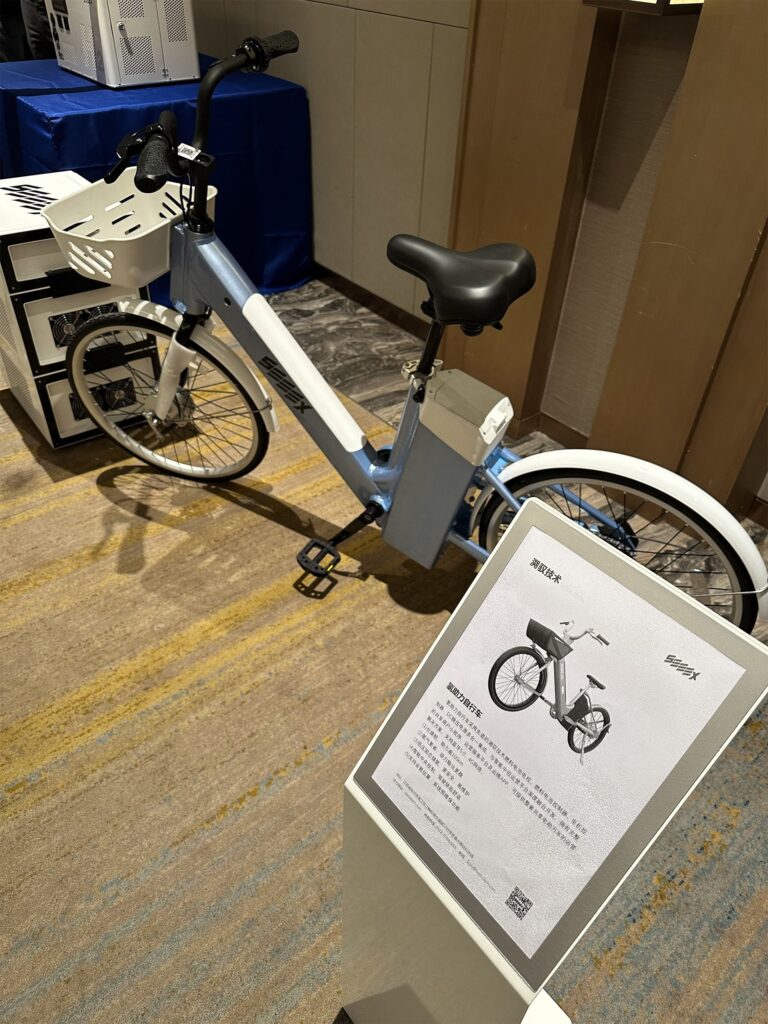The gap between hydrogen energy and daily use may be narrowing, potentially rivaling familiar renewable energy sources like wind turbines and solar street lights. A hydrogen-powered bicycle, showcased by Seeex Tech at a recent event, exemplifies this progression.
This bicycle, while visually similar to common bikes, incorporates a distinctive internal solid-state hydrogen storage tank and Seeex Tech’s integrated vehicle-level electronic control system solution.

The bike’s efficiency stems from its integrated fuel cell controller, motor controller, and DC voltage regulator, all connected to an intelligent central control operation platform. A new torque sensor and high-efficiency hub motor enable the system to adjust hydrogen power supply based on the rider’s pedaling force, creating a synergy between human and hydrogen power.
On challenging terrains, the hydrogen power system provides additional support, enhancing the riding experience. The bicycle can cover approximately 80 kilometers on a single hydrogen tank, with zero carbon emissions.
This hydrogen-assisted bike is primarily designed for shared mobility scenarios. It’s equipped with a complete shared user mini-program, operation service platform, and maintenance app, supporting Bluetooth 5.0 and 4G networks.
Seeex Tech, founded in 2021, specializes in integrated electronic control platform services for hydrogen energy applications. At the recent event, the company also unveiled two new products for summer 2024: the second generation of its hydrogen power module and the Ruoyu architecture development kit.
The new hydrogen power module, dubbed “SeePack3000N,” utilizes modular hydrogen power multi-unit parallel technology to meet various power needs flexibly. It forms an expandable modular system that can be monitored, alerted, stored, and traced.
This next-generation module has potential applications in low-altitude aircraft, data centers, remote base stations, and home backup power.
The upgraded Ruoyu 2.0 is a highly parallel programmable integrated architecture designed to accommodate the expanding scale of fuel cell power and enriched operational functions in the industry. It includes a mature operating tool library and embedded software toolchain plugin, optimizing the development process for hydrogen power generation scenarios.
Ruoyu 2.0 connects hydrogen production, storage, power generation, and comprehensive scheduling scenarios. The new-generation programmable power controller equipped with Ruoyu 2.0 has passed rigorous testing, becoming the world’s first hydrogen fuel cell fully integrated electronic controller to receive Class 3 certification.
Concurrent with the product launch, Seeex Tech’s Suzhou manufacturing center became operational. Spanning over 6,000 square meters, this facility will support the production and R&D of tens of thousands of hydrogen energy industrialization units.
KrASIA Connection features translated and adapted content that was originally published by 36Kr. This article was written by Xue Xiaowan for 36Kr.
